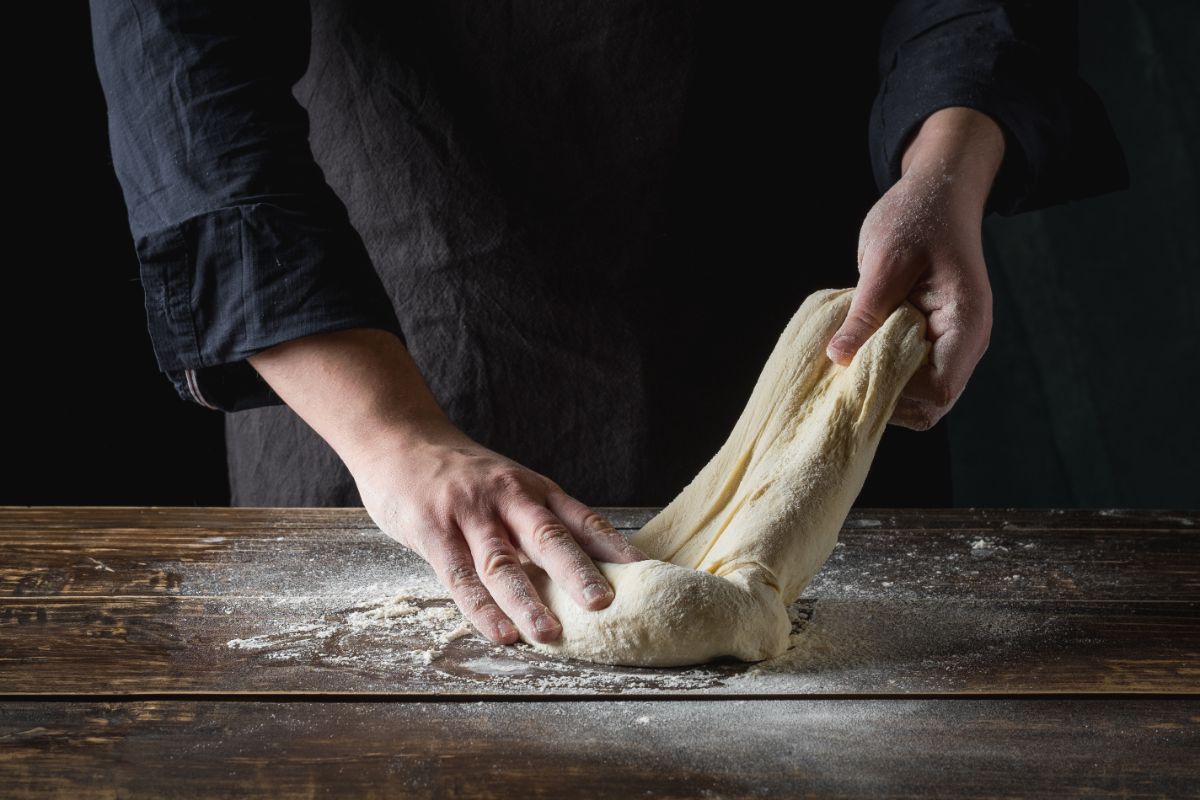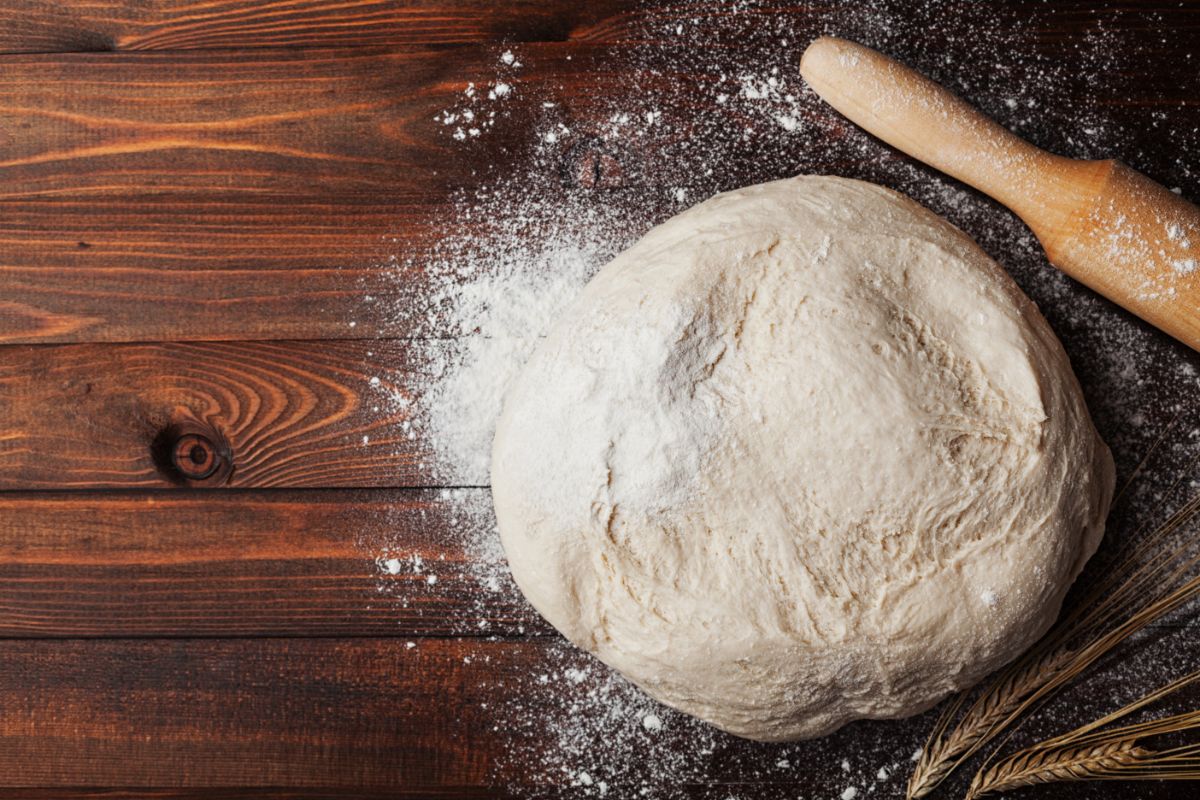One of the most important stages of making pizza is proofing your dough. You simply cover the dough and allow it to rise at room temperature for 3-4 hours.

So, can you overproof pizza dough? Yes. Over-proofing can easily ruin your pizza. Because the process allows the gluten to strengthen, the dough may collapse resulting in a deflated pizza.
While you can still make your pizza without proofing, it will come out with undesirable qualities. When yeast feeds on sugars, it releases carbon dioxide.
And because the yeast didn’t have enough time to feed, your pizza will not be fluffy and airy. Worst of all, you could end up with balloon-shaped pizza dough.
How do you achieve the right proof?
Well, this will depend on whether you’re using homemade or store-bought dough. Generally, the dough can be proof from 30 minutes to 3 hours.
The biggest mistake you can make is to proof dough that is too cold. If the yeast expels all the gas, you could end up with a flat pizza.
The best way to find the ideal time for proofing is to experiment. Just proof two dough balls at different times, cook them, and see the time that worked best. After several trials, you can adjust the time based on your recipe.
Timing is the key to success. Every conventional baker will tell you that it’s quite challenging to know when the dough has expanded fully. If you’re just getting started, it’s normal to make a few mistakes and learn from them.
How to rescue over-proofed pizza dough
If you’re proofing the dough before you start making your pizza, you could easily forget about out. This is the case when juggling different meals (especially in holidays).
Now that you have an over-proofed dough, can it return to life? The simple answer is YES. Don’t dispose of the dough in the trash can. Before we discuss how you can rescue the dough, there are a few things to keep in mind.
Since proofing boosts the production of carbon dioxide, the dough should be strong to retain the gas. Secondly, fermentation occurs during the last stage of proofing.
Thirdly, proofing has some effect on the texture and flavor. When the dough is over-proofed, carbon dioxide exerts more pressure resulting to tear. Most bakers believe that over-proofed dough is irretrievably damaged but this is not always the case.
The first step is to confirm that you have an over-proofed dough. Simply press your finger on the surface of the dough and check how fast it springs back.
If it doesn’t, then you’ve over-proofed the dough. Next, remove the dough from the basket and press it down on a flat surface. This will remove the excess air. Be sure to place the dough in a lightly-oiled basket/mixing bowl to prevent it from drying out.
After that, shape your dough and return it to the basket for proofing. After 15-20 minutes, place the dough in the oven. If you compare the results of a properly proofed loaf and the forgotten one, you’ll see the extra rise. In terms of flavor, there’s no discernible difference.
This method works best on pizza dough, French lean dough, country-style dough, and high-hydration dough. The only downside with this method is that once you cook the pizza, it will have a pale crust.
This brings us to the question, what happens if you cook the pizza without deflating over-proofed dough? Since the pizza dough had risen before hitting the oven, it will collapse. While this will not affect the flavor, it’s not a pretty picture.
You can also use this method to retrieve sourdoughs made within a few hours. But if you over-proof the dough overnight, it won’t work. This is because the lactic acid bacteria make the dough very hard to reshape.
Does all pizza dough need proofing?

No. Live dough crusts do not require proofing. However, if you’re using dough balls to make your pizza they have to go through fermentation.
This allows the dough to increase in volume. The process should take place before the dough is rolled and placed in the oven. It all starts with dough management.
Where should you proof your pizza dough?
According to professional bakers, fermentation starts at 33 degrees F, accelerates up to 100 degrees F, and slows down at 140 degrees F. Beyond this temperature, the yeast will die.
To prevent the dough from over-proofing, you should maintain the temperature above 40 degrees F. Before you place the pizza dough in the refrigerator, check the temperature.
But how do you know how much pizza dough to proof? This will depend on how big you want your pizza to be. When determining the amount of dough you need, make sure you leave a space for a 10% buffer. Once you keep your dough in the refrigerator, use the old one first.
Heat improves the fermentation process, so it’s prudent to keep the dough near the heat. Sometimes, you’ll find bakers placing the pan in the oven during proofing.
If you want to prepare several pizza doughs, you can place the pans on top of each other. The bottom one will proof faster and acts as an insulator for the others.
Another place where you can place the dough is on a wheeled rack or warm air vent. To minimize any inconsistency in temperature, you should turn the pan once in a while.
The other option is to place the dough in a temperature-controlled cabinet. Put one cup of hot water to add moisture. If you want to make great pizza, you should use specialized tools to manage the process.
To achieve consistent results, you may want to buy a dough proofer. It controls the temperatures and humidity levels. Unlike other proofing equipment, you can set the temperature from 70 degrees F to 115 degrees F.
How do I know my pizza dough has achieved the right proof?
Make an indentation on the dough using the tip of your finger. A few things can happen. If the indentation pops back halfway, then it’s time to place your pizza dough in the oven.
If no indentation is left, the dough is under-proofed. But if the indentation remains, the dough is over-proofed. Properly-risen dough doubles in volume while over-proofed dough collapses when poked.
Conclusion
Proofing will allow your pizza dough to rise and ferment before baking. This is a rest period which is generalized as the fermentation process. It starts by dissolving the yeast in water and feeding it to sugars.
To put it succinctly, the proofing process should take 1-3 days. Apart from improving dough texture, proofing enhances the flavor. You also get a light, airy crust in your pizzas.
